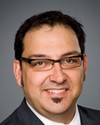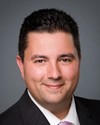Mr. Speaker, I am pleased to rise today to speak to Bill C-2, an Act to amend the Controlled Drugs and Substances Act. In listening to the debate in the House, it is good we are having it.
Today, I would like to talk about the history of the Vancouver safe injection site, or the harm reduction site, because it adds to the debate on of how we might move forward with future sites.
If I have time, I will also talk a bit about the scientific evidence that backs up the creation and continual operation of these sites because as a science and tech critic that is something I look at quite regularly.
In looking at the history of the safe injection site in Vancouver, the theme would be local choice. I have lived very close to the site. I know people who manage the site. When I was a professor at SFU, I would take students to the site when there were no clients there. I have known people who have used the site.
Sometimes when we talk about the facility in the House, we tend to overstate what it is. I am not sure if any of my colleagues on the other side have had a chance to visit the safe injection site, but I think they would be amazed at how innocuous it is. There is a lot to look at when walking down Hastings Street because it is a very active community. However, one would walk right by the site because there are no flashing lights which say “Inject heroin here”. It is a medical facility.
When one enters through its doors, it looks kind of like a hair salon. It has maybe up to 15 stainless steel booths with mirrors in front of them, bright lights, chairs and a nurse's station so when people are injecting there they are using clean needles and are being supervised. If they overdose, they can be rescued. There is also a room where they can relax and adjust to the effects of the drug. Then they move out. It is not a scary place. It is a place of comfort for a lot of people. That is why the history of this site is so important.
The safe injection site was created in Vancouver because there was a policy problem that emerged in the late eighties and early nineties where hundreds of bodies were being pulled out of hotels in the Downtown Eastside. I know this because I had spoken with Senator Larry Campbell, who was the coroner. He said that he would go into hotels in the Downtown Eastside and would pull dead bodies out. This was happening over and over again, mainly because of overdoses.
The mayor of Vancouver at the time was Philip Owen. He was in the Non-Partisan Association, which is the name of the party. It is a coalition of federal Liberals and federal Conservatives. He was a three term mayor at that point. I would describe him, and I think he would agree, as a very Christian man. He has a predilection for ballroom dancing, but is a deeply religious man who, as mayor of the city, felt that he had to address this. What had happened simultaneously was that a number of addicts had started the Vancouver Area Network of Drug Users, which was an unofficial safe injection site. Mayor Philip Owen, who was a good policy maker, decided to meet with those people and ask them what their problems were. I do not want to speak for him, but some of the questions he was facing were some of the questions my colleagues on the other side have. The idea of providing a safe site for people to inject clashes with the values they hold.
Philip Owen is a brave man. He commissioned a study on harm reduction and put it through council as official policy. It was voted through Vancouver city council. I believe the party then kicked him out as leader. It said that there were people with other ambitions who decided to move against him. It became the main debate of the 2002 civic election in Vancouver, which featured Larry Campbell, who had moved from coroner to mayoralty candidate, versus Jennifer Clarke, another mayoralty candidate. The debate throughout that whole election was about this safe injection site.
Larry Campbell ran for a party called COPE that had really never in the history controlled an absolute majority on council. He won, and that is why we have InSite today. Larry Campbell championed this cause, won an election on it, convinced all the local area residents and merchants, police, emergency services, that this was necessary and, as we heard, in 2003, this site was created.
The bill is problematic because it is too prescriptive.
If we listen to the story about how InSite was developed in Vancouver, it was a local choice. However, these local choices sometimes need some flexibility in terms of development. The are really driven locally anyway.
If we look at the funding of who provides these facilities, this is also co-operative and negotiated. We have federal, provincial, municipal agencies. We have police forces. We already have the local community negotiating. I can tell members that if a local community does not want a safe injection site, it will not get it, whatever federal regulation because it is solely driven by a local policy problem.
What now we have in Vancouver I think has been around the world in other places too. It is not like we invented this in Vancouver. We borrow from other places around the world. We have a facility where people can go and inject their drugs safely, under supervision, and then get on with their lives.
Heroin is a bugaboo. It is an illegal substance. However, I think the question that Philip Owen would have asked himself is what the alternatives were. I think the other side perhaps would prefer abstinence.
If somebody is a heroin addict and has perhaps other mental health issues and has a low income, it is very difficult, impossible actually, to safely go from being a heroin user to a non-heroin user overnight, especially because there are hardly any facilities for that person to do it.
It is about management. That is really what these sites do is help manage these problems that keep people alive.
My core belief is an idea called “intrinsic equality”, meaning that everybody's life is worth the same. Wayne Gretzky is not worth five drug users. Everybody's life is worth the same. It is found in many religions, but I am not coming at it from a religious perspective, but more of a philosophical perspective; all lives are of equal worth.
I think this is the problem Philip Owen would have faced. I believe life, in his perspective,would have been a sacred thing that is worth protecting. “If I do not go forward with this policy, people are going to die. Can I have that on my conscience?” I think the answer was no. This safe injection site is a simple policy solution to manage our problem that could not be eradicated.
It is a very mature way of looking at things and I am very grateful.
It is not for every community because there is not the need. This is why a local community choices are so important.
I would have believed the bill was a genuine attempt if the other side had not tried for so many years to shut down the safe injection site in Vancouver, indeed, writing fundraising letters about how it was shutting it down and so forth.
If this had been entered much earlier in the debate, it would have been something I would have considered,. However, my colleagues are right, that this is not a genuine attempt to open this debate. It is disappointing.
Again, I would ask my colleagues to reconsider, to visit the site themselves to see how innocuous it is and how it is helping people and bringing the community together in a positive way, in a community that is suffering greatly at times.









